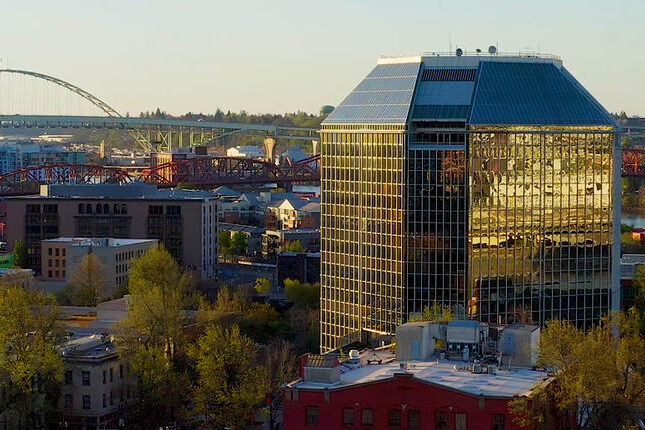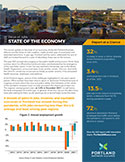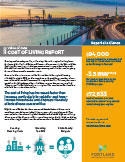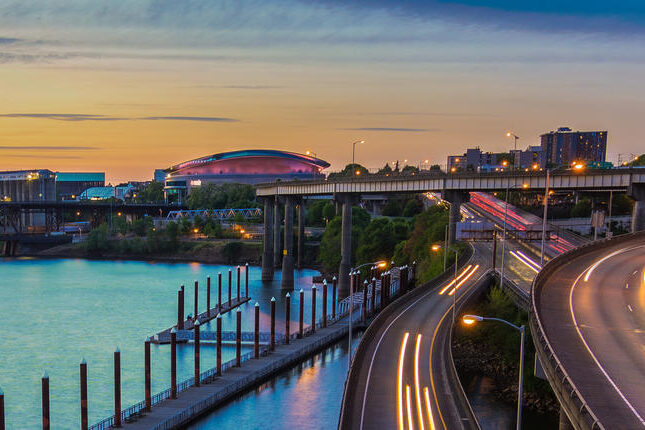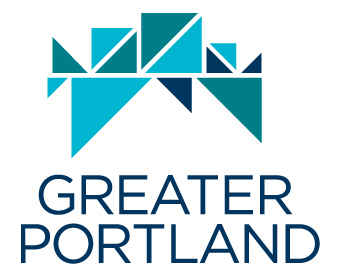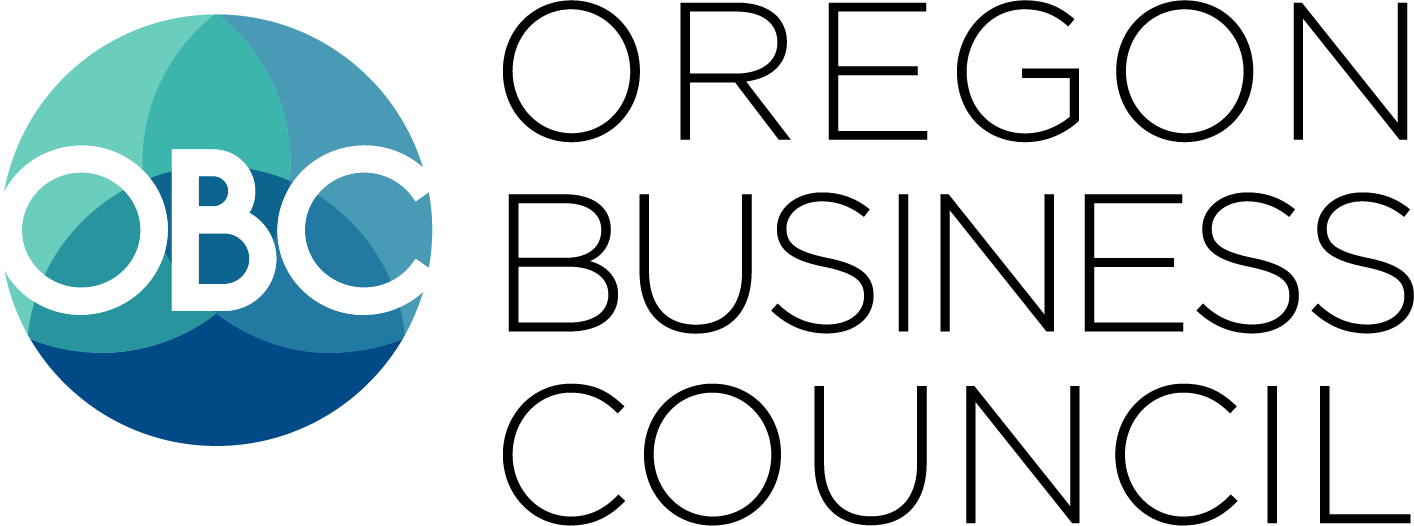A year ago, Portland and the nation celebrated the end of 2020 and looked forward to a year of rebuilding. Hope was on the horizon. Vaccines were in the early stages of deployment, and Congress passed another round of federal support with expectations that more relief was on the way. The incoming Biden Administration set a goal of vaccinating 70 percent of adults by July 4th, and it appeared the pandemic would gradually come under control.
What followed was another year of uncertainty, disappointment, and extended restrictions. 2021 proved discouraging on the public health and economic fronts. Early summer return-to-office/school protocols were overshadowed by the emergence of the new Delta variant. In the Portland region, infection rates increased rapidly beginning in early July and peaking in mid-September. A new low was reached in November just as the World Health Organization announced news of yet another variant, Omicron. Infections spread rapidly in December and hit pandemic all-time highs for positive case counts in the Portland region this January. And while the Omicron variant has not proved as deadly as earlier variants, it has exhausted health resources, employers, and patience.
Last year’s economic conditions far exceeded early pandemic expectations. Many industries successfully transitioned to remote work and otherwise coped with the need to socially distance workers. Unprecedented federal fiscal and monetary relief was key to keeping U.S. economic output close to its pre-pandemic trend. But global disruptions to supply chains and domestic labor shortages have vexed employers and triggered the highest rates of inflation in a generation. Ongoing uncertainty about inflation and the pandemic have affected the nation’s mood.
In the Portland region, several of the challenges highlighted in last year’s report persist. Office workers have been slow to return to downtown Portland because of ongoing concerns about the virus and public safety. Fencing remains around the federal courthouse. And industries at the center of the pandemic recession have not fully recovered. But there’s good news too. The regional unemployment rate—at 3.4 percent in December 2021—is well below the level anticipated 18 months ago. In general, those who can join the labor force have jobs waiting for them, as job openings are at record highs across the state.
Related Report
Report at a Glance
Economic Recovery
Robust federal support and the economy’s ability to adjust to social distancing has accelerated the recovery across the U.S.
The jobs recovery—nationally and regionally—is impressive given initial conditions in the Spring of 2020. In Portland, jobs rebounded sharply at the end of lockdown and have grown steadily since—except for November-December 2020. By contrast, the region continued to lose jobs at a similar point in the 2007-2009 recession. See Figure 1.
Economists credit a strong federal response for the recession’s brevity—the shortest in U.S. history. The federal government provided $5.2 trillion in fiscal support through six relief packages during 2020-2021. About $65 billion in relief reached individuals, businesses, and governments across Oregon. The packages have boosted personal incomes, increased personal savings, and supported a sizable share of small businesses across the country.
Additionally, businesses in many industries have re-organized their operations to accommodate social distancing, through either remote work or adopting distancing protocols at work sites.
A decade of positive gains in jobs, incomes, and equitable outcomes in Portland has slowed (possibly reversed) during the pandemic, with jobs recovering less than the U.S. average and least among peer regions
Following the last recession, the Portland region experienced higher-than-average annual job growth. During and after the pandemic recession, the Portland region has lagged the U.S. Portland only grew by 2.1 percent compared to the U.S. average of 2.8 percent. See Figure 2.
Compared to its peers, Portland metro has the slowest jobs recovery during and after the pandemic recession at 3.2 percent below the pre-pandemic level. See Figure 3.
Consumer behavior and tighter state and local regulations have slowed the recovery of the leisure, hospitality, and services sectors
Portland’s job loss has been largely concentrated in the leisure and hospitality sector and services. See Figure 4. Stricter public health mandates on the West Coast and a more virus-cautious public have led to less dining out and fewer hotel stays. Portland’s Open Table reservations were down more than 50 percent in November 2021 compared with pre-pandemic levels. By contrast, reservations on the online platform were up 12.2 and 15.1 percent, respectively, in Austin and Nashville during the same period (Open Table, 2021).
Employment in the region’s metals and transportation equipment manufacturing industries is still well below pre-pandemic levels
Portland’s metals and transportation equipment manufacturing industries also stood out in terms of pandemic-related job losses. By November 2021, employment was still down about 10-30 percent relative to February 2020. See Figure 5. Several of the industries’ leading businesses provide materials and supplies to aircraft manufacturers, which have been adversely affected by sharp declines in leisure and business travel.
Reputational challenges persist: Portland remains in the bottom half of ULI’s survey of investor interest
Last year’s report highlighted views about Portland from an important outside group: real estate investors. Like last year, this year’s findings are troubling. The Urban Land Institute (ULI) routinely polls real estate professionals on the relative ranking of 80 markets across the country. The Portland region fell from the 3rd ranked region nationally in 2016 to the 66th in the 2021 survey. Portland showed a modest rebound, to 49th, in the 2022 report, see Figure 6, but remained behind its peers Nashville (1), Austin (4), Seattle (9), Salt Lake City (11), and Indianapolis (33). Deserved or not, sustained national attention on Portland during mid- to late-2020 for its social justice protests, natural disasters, and ongoing challenges with homelessness has adversely affected the region’s reputation among investors.
A Focus on Downtown Portland
Mobility data suggest disproportionate challenges for downtown Portland relative to the region’s suburbs and to downtown Seattle
The pandemic recession disproportionately affected central cities across the U.S. as large shares of downtown workers relocated to their homes. Downtown Portland shares its return-to-office challenge with most downtowns across the country. What was unclear in last year’s report is whether impacts on Downtown Portland were more severe than in other downtowns.
Newly acquired mobility data—from Placer.ai—provides insights into the degree of Downtown Portland’s challenges. Foot traffic around Downtown Portland retail centers in November 2021 was down more than 40 percent from November 2019 while comparable suburban centers show about a 10 percent decline. That’s unsurprising given the central city-suburban dynamic nationally.
More telling is a comparison of foot traffic in the downtown cores of Portland and Seattle. Placer.ai data distinguish between visitors and employees in an area. See Figure 7. Visitors are more important to downtown activity in Portland than in Seattle, representing 64 percent of pre-pandemic activity (versus Seattle’s 55 percent).
Portland lags Seattle in recovery of both visitors and employees to the downtown core. During Summer 2021, Seattle reached near-baseline pre-pandemic levels, while Portland was still down 30 percent or more. Currently, there is an 8-9 percentage-point difference for visitors and employees, with the Portland downtown lagging the Seattle downtown. See Figures 8 & 9. These findings deserve more examination but are consistent with a hypothesis that the federal government’s interventions in July 2020, and associated protests, have suppressed activity in Portland’s downtown core.
The relative severity of Portland’s city center challenges also shows up in peer-to-peer comparisons of downtown office vacancy rates. Portland office vacancies were the highest of any peer region at 12 percent in 2019 and over 18 percent in 2021. Seattle and Austin had the next highest rates in 2021 at about 15 percent (CoStar, 2021).
The Portland region has had relatively strong public health outcomes (i.e., low Covid death rates) consistently throughout the pandemic
The region’s residents have listened to, and followed, public health guidance. Whether by government mandate or choice, local consumers have been slower to return to restaurants than those in other regions. Stricter adherence to public health directives has contributed to lower Covid death rates in the region. See Figure 10.
Portland’s Changing Population
Metro-area population growth has slowed since 2016; Clark County grew at the fastest rate during 2017-2020, contributing the most of the four counties to net change
The region’s population is growing at about half the rate that it was in 2016. In the immediate term, slower population growth eases pressure on the underbuilt housing market and mitigates increases in rents and home prices. But in the longer term, slow population growth is a troubling sign for the economy. Families and businesses vote with their feet, and recent trends suggest the region is not as attractive to prospective residents as it was during 2014-2016.
The population story differs across the region’s four major counties. See Figure 11. Multnomah and Washington counties show similar trends: strong in-migration during the mid-2010s that all but disappeared by 2020. In recent years, the two counties relied almost exclusively on natural population growth (the number of births outnumbering deaths in the incumbent population). By contrast, Clackamas County’s growth has come from in-migration, which has slowed since 2016. That has left Clark County as the region’s population growth engine, contributing most of the net change in population during 2018-2020.
Over the same period, the share of Portland’s population that is racially or ethnically diverse increased the most among its peers (a 32 percent increase from 2010 to 2020). See Figure 12.
These dynamics play out as the U.S. recorded its slowest population growth in history during the 2010s—because of fewer births, more deaths, and reduced immigration. Increasingly, the country’s aging demography and, for the time being, tighter immigration posture will curb national population growth and pit regions against one another for workforce talent. Greater Portland’s success in that competition could spell the difference between a dynamic and stagnant economic future.
Many years of apartment-construction-activity decline appears to be reaching the bottom; recent permitting activity is returning to near pre-pandemic levels
The number of apartments under construction in the region and in the City of Portland has been declining for close to three years. See Figure 13. The decline can be attributed to a variety of factors, but largely had to do with challenging market conditions associated with increasing construction costs, rents that plateaued for new construction, and the historic rate of investment into the region, along with increased regulations like the construction excise tax, inclusionary housing, and rent stabilization. Existing market conditions were exacerbated early in the pandemic, but over the past six months new construction permitting has started recovering. The data show the rate of decline for apartment units under construction is slowing and may have hit bottom in the metro region and the City of Portland.
Why this matters
As we continue through the early months of 2022, many are considering what lasting social and economic impacts both the pandemic and Portland’s reputation will have on Portland’s ability to return to its days of overall prosperity. Many factors, including employees and visitors returning to the downtown core and elected officials addressing surging crime and homelessness, will determine Portland’s ability to fully recover.
The question remains, will significant tax burdens on families deter and/or drive away residents? What, if any, changes and/or incentives will the region offer employers, visitors, and prospective residents?
DATA ANALYSIS/SOURCES:
In this report, the Portland region refers to the Metropolitan Statistical Area (MSA) of Portland-Vancouver-Hillsboro, OR-WA, except where otherwise noted. Metrics also compare the Portland region to other metropolitan “peer” regions. These comparator regions were selected and based on a number of indices found in the U.S. Census Data. Data and analysis provided by ECONorthwest.
This report is presented to you by:
Value of Jobs Coalition Partners
With gratitude to ECONorthwest, our State of the Economy partner for 12 years and counting!
